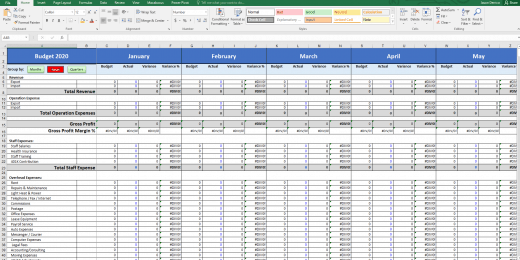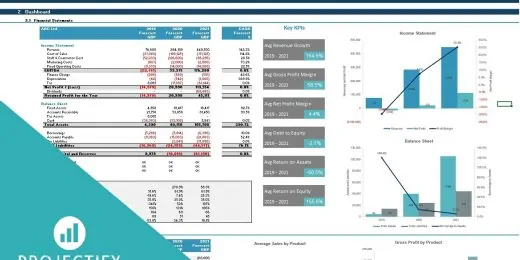Your Comprehensive Guide to Layout Aquaponics Design

Your Guide to Aquaponics Design covers the essentials of creating a sustainable, symbiotic environment for plants and fish. Discover key principles and practical steps to layout your system effectively.
Aquaponics combines aquaculture with hydroponics, offering a unique approach to sustainable farming by enabling fish and plants to grow in a mutually beneficial cycle. Aspiring green thumbs and seasoned growers alike seek to master this technique for its water efficiency and organic crop production.
Understanding the nuances of aquaponic design is vital, from choosing the right fish and plants to ensuring proper water flow and nutrient balance. This introduction to aquaponics design lays out the groundwork for constructing a thriving system, whether for personal satisfaction or commercial ventures, befitting anyone driven by eco-conscious innovation and self-sufficiency. Your journey to mastering aquaponics starts with grasping its design concepts – the cornerstone of a successful, environmentally-friendly grow system.
Introduction To Aquaponics
Welcome to the world of aquaponics, the innovative, eco-friendly method of farming that combines aquaculture with hydroponics. This guide provides a deep dive into designing your aquaponic system. Whether you are a seasoned gardener or a curious beginner, aquaponics offers a unique approach to growing food that is both sustainable and efficient.
What Is Aquaponics?
Aquaponics is an integrated system that unites fish and plants in a symbiotic relationship. In this circular system, fish waste provides an organic nutrient source for the plants. In turn, the plants filter and purify the water, which is then recirculated back to the fish tanks. It’s a seamless blend of two ecosystems, working together to produce food.
Benefits Of An Aquaponic System
- Resource Efficiency: Aquaponics uses significantly less water than traditional farming.
- No Soil Needed: Say goodbye to soil, as plants grow in water, making this system perfect for any space.
- Organic Produce: Plants in aquaponic systems grow without the need for chemical fertilizers.
- Year-Round Harvest: Control over the environment allows for continuous plant production.
Key Components Of Aquaponics
Diving into the world of aquaponics brings excitement and the promise of sustainability. An aquaponic system thrives on the balance between several key components. Each part plays a vital role, turning what seems like an intricate dance of elements into a beautiful, self-sustaining ecosystem. Know the core elements, and you’re well on your way to mastering the art of aquaponics.
The Fish Tank
The heart of any aquaponics system is the fish tank. It’s home to the fish whose waste provides essential nutrients for plant growth. Common tank materials include glass, fiberglass, or food-grade plastic. Aim for a size that matches your fish population and plant bed volume. Keeping the size proportional ensures a healthy environment for your aquatic buddies.
The Grow Bed
Above, plants flourish in the grow bed. This feature, filled with a growth medium like gravel or clay pebbles, supports plant roots while filtering the water. There are different styles, but all serve the same purpose. The depth usually ranges from 12 to 16 inches for optimal growth. Plants pull out the toxins, leaving clean water to return to the fish below.
Water Circulation System
A well-designed water circulation system is crucial. It pumps water from the fish tank to the grow bed and back again. This system can be split, single loop, or connected with sump tanks, depending on the scale and complexity of your setup. Components such as pumps, pipes, and timers work together to ensure a continuous flow, imitating nature’s cycle.
Selecting The Right Location
Finding the ideal spot for an aquaponics system marks the start of a successful journey. Proper location choice ensures optimal growth for both plants and aquatic life. It’s critical to assess factors like sunlight, temperature, and space. Let’s explore the options for setting up your system with success.
Indoor Vs. Outdoor Aquaponics
Where to build an aquaponics garden? Inside your home or outside in the backyard? Each choice comes with its perks.
| Indoor Aquaponics | Outdoor Aquaponics | |
|---|---|---|
| Climate Control | Stable temperatures all year. | Dependent on weather conditions. |
| Space | Limited by room size. | More space, bigger potential scale. |
| Sunlight | Relies on artificial lighting. | Natural sunlight benefits. |
Considerations For Space And Scale
- Measure your available space: What fits in that area?
- Start small, plan to expand: Easier to manage and scale later.
- Accessibility: Ensure easy access for maintenance.
- Power and water sources: These are critical for the system.
Remember to think about daily operations. Easy reach to all parts of the system is a must. The goal is to create a healthy environment for fish and plants to thrive together harmoniously.
Design Considerations For Aquaponics
Aquaponics blends aquaculture with hydroponics to produce food in a sustainable way. Designing an aquaponics system requires a solid understanding of both disciplines. Think about space, cost, climate, and the types of plants and fish you want to grow. Let’s explore essential design considerations to maximize the efficiency and productivity of your aquaponics system.
System Design Types
Choosing the right system design lays the foundation of your aquaponics farm.
- Media-filled beds are great for beginners. They use grow media and work well for many plants.
- Nutrient film technique (NFT) lets water flow through channels, perfect for leafy greens.
- Deep water culture (DWC) systems submerge the plant roots in water, ideal for large-scale ventures.
Material Choices For Construction
Materials impact the durability and safety of your setup.
| Material | Pros | Cons |
|---|---|---|
| Food-Grade Plastic | Lightweight, easy to clean | Might degrade in sunlight |
| Concrete | Durable, great for large tanks | Requires sealing, heavy |
| Metal with Coating | Strong, long-lasting | Can rust if uncoated |
Remember to use materials that are safe for both fish and plants. Avoid anything that leaches harmful chemicals.
Choosing Your Aquaponic Fish
Welcome to the pivotal segment of ‘Your Comprehensive Guide to Layout Aquaponics Design’ with a keen focus on Choosing Your Aquaponic Fish. This choice determines the health and productivity of your aquaponic system. Balance biology, water chemistry, and your culinary preferences with this guide.
Popular Fish Species
Selecting the right fish for your aquaponics system is crucial. Here are some popular species:
- Tilapia: Adapts well, grows fast.
- Catfish: Hardy, bottom dwellers.
- Carp: Resilient, widely available.
- Trout: Prefer cooler temperatures.
- Goldfish: Decorative, produce rich waste for plants.
Climate And Fish Health
Managing the perfect climate is imperative for healthy aquaponic fish. Consider these factors:
| Fish Species | Optimal Temperature Range (°F) | Notes |
|---|---|---|
| Tilapia | 70 – 90 | Great for warm climates. |
| Catfish | 75 – 85 | Durable across various conditions. |
| Trout | 50 – 65 | Ideal for cooler regions. |
Choose a fish that thrives in your local climate to ensure long-term success. Consult local aquaculture experts to tailor your system perfectly.
Plants For Your Aquaponic Garden
Plants for Your Aquaponic Garden are the green stars of this sustainable ecosystem. They not only provide delicious produce but also aid in filtration, contributing to the health of your aquatic friends. Selecting the right mix of plants is crucial for a thriving aquaponic setup. Understanding which plants are best suited and how to position them can lead to plentiful harvests and a well-balanced system.
Best Plants For Aquaponics
Your garden’s success starts with choosing plants that flourish in aquaponic systems. These plants enjoy the moist environment and can handle the nutrient-rich water provided by the fish waste. The following are some top performers:
- Leafy Greens: Lettuce, kale, spinach, and arugula grow quickly and need little space.
- Herbs: Basil, mint, chives, and parsley enhance flavor in dishes and are aquaponic-friendly.
- Fruiting Plants: Tomatoes, cucumbers, and peppers add variety and color to your harvest.
These plants require different amounts of light and nutrients. Plan your garden layout to meet these needs.
Plant Placement And Density
Positioning is vital in an aquaponic system. Plants with similar needs should group together. Here’s a simple guide to help you strategize:
| Plant Type | Light Needs | Nutrient Needs | Spacing |
|---|---|---|---|
| Leafy Greens | Moderate | Low | 6-8 inches apart |
| Herbs | High | Moderate | 8-10 inches apart |
| Fruiting Plants | High | High | 12-18 inches apart |
Proper spacing allows plants to grow without competing for nutrients. This layout ensures that each plant receives the right amount of light and airflow, preventing pests and diseases.
Water Quality And Management
Creating an ideal environment for fish and plants is a key part of aquaponics design. Correct water quality is like giving your plants and fish a clean, healthy home. It’s important to keep water conditions perfect so that both can thrive. Let’s dive into how to do this.
Maintaining Ph Balance
The pH level of water is crucial in aquaponics. This level tells if your water is acidic or basic. Healthy pH levels range from 6.8 to 7.2, ideal for most aquaponic systems. Keeping this balance is important for fish health and nutrient absorption by plants.
- Test pH regularly with a pH meter.
- Add natural pH adjusters like lemon juice for acid or baking soda for base to correct levels.
- Make changes slowly to avoid shocking fish or plants.
Nutrient Solutions And Cycling
Nutrients in aquaponics come from fish waste. This waste turns into food for your plants. This is called the nitrogen cycle. You must manage it well for a successful system.
- Start the cycle by adding fish slowly to new systems.
- Use test kits to watch ammonia, nitrite, and nitrate levels.
- Know when to add more fish or feed them less.
Remember, understanding water quality keeps your fish swimming and plants growing!
Daily Operations And Maintenance
Welcome to the heart of your aquaponics system: Daily Operations and Maintenance. For your ecosystem to thrive, consistency is key. With simple, routine care, your aquaponics garden will reward you with bountiful harvests and a sustainable cycle of life between fish and plants.
Feeding Your Fish
Feeding your fish is more than just a daily task—it’s the cornerstone of a healthy aquaponics system. Here’s how you can keep your aquatic friends happy and nourished:
- Choose the right food for your fish species.
- Feed them once or twice a day, depending on their needs.
- Monitor how much they eat within five minutes to avoid overfeeding.
- Remove uneaten food to prevent water quality issues.
It’s essential to track feeding times and quantities to maintain balance. A feeding schedule ensures you never miss a meal.
Monitoring Plant Growth
Plants are the natural filters in an aquaponics system. They keep the water clean for your fish. Monitoring their growth is vital. Here’s a simple checklist to keep your greens growing strong:
| Weekly Checks | Signs of Good Health | Action Items |
|---|---|---|
| Leaf Color | Rich, Vibrant | If yellowing, check nutrient levels. |
| Root Health | White and Strong | If brown or slimy, assess water quality. |
| Growth Rate | Consistent with Species | If slow, adjust light or spacing. |
Remember to journal plant progress to spot trends and make smarter maintenance decisions. With attentive care, your aquaponics garden will be both a joy and a testament to sustainable living.
Troubleshooting Common Issues
No aquaponics system is immune to issues, but don’t worry! Understanding how to tackle common problems keeps your system healthy. Let’s dive into troubleshooting and keep your fish and plants happy.
Dealing With Pests And Diseases
Even in controlled environments, pests and diseases can arise. Early detection and identification are key to managing these problems. Watch for signs of troubled plants or fish.
- Inspect your plants regularly for pests like aphids or spider mites.
- Remove affected leaves and use organic pest controls.
- For diseases, isolate sick fish or plants if possible.
- Clean and disinfect tools to prevent spread.
Always prefer natural remedies to keep the aquaponic ecosystem in balance.
Water Quality Problems
Water is the lifeblood of any aquaponics system. Maintain high-quality water to ensure the health of your system. Testing regularly helps spot issues early.
| Parameter | Desired Range | Action if Out of Range |
|---|---|---|
| pH Level | 6.8 – 7.2 | Adjust with pH up or down solutions |
| Ammonia | 0 – 0.25 ppm | Check feeding rates and biofilter performance |
| Nitrite | 0 ppm | Ensure adequate aeration and water circulation |
| Nitrate | 5 – 150 ppm | Maintain plant to fish ratio |
Keep records of your water testing results. Taking action before levels become harmful is paramount for a thriving system.
Innovations In Aquaponic Systems
As sustainability in food production gains momentum, aquaponic systems evolve too. Cutting-edge technologies enhance efficiency and yield. They ease maintenance and optimize growth. Let’s dive into the latest innovations reshaping the world of aquaponics.
Automation In Aquaponics
Automation is a game-changer for aquaponics. It simplifies farming, saving time and reducing errors. Smart systems manage feeding, lighting, and water quality. Sensors track pH levels, temperature, and nutrient concentration. Data from these sensors prompts precise adjustments, ensuring optimal conditions for plant and fish health.
- Automated feeders: Dispense the perfect amount of food at set times.
- Climate controllers: Keep temperature and humidity just right.
- Monitoring apps: Allow remote system checks via smartphones.
These automated tools bring efficiency to the forefront. They allow hobbyists and commercial farmers alike to focus on scaling their operations.
Emerging Technologies
New technologies push the boundaries of traditional aquaponics. Innovations lead to higher outputs with less input. Let’s review some breakthroughs:
| Technology | Benefits |
|---|---|
| LED grow lights | Mimic sunlight, save energy, and boost plant growth. |
| Water recycling systems | Reduce waste, maintain nutrient balance, and conserve water. |
| AI-powered analytics | Predict harvest times, prevent disease, and increase yield. |
LED grow lights tailor light spectra to plant needs. They speed up growth without sunshine. Water recycling systems ensure nothing goes to waste. They make aquaponics more eco-friendly. AI-powered analytics use big data to fine-tune system performance. They help anticipate issues before they happen.
These emerging technologies promise a brighter future for aquaponics enthusiasts and professionals. They bring resilience and productivity to food systems worldwide.
Case Studies
Diving into a range of aquaponics designs, it is crucial to learn from real-life examples. These case studies illustrate both commercial and personal endeavors, shining a light on the intricacies and successes of various setups.
Successful Commercial Systems
Commercial aquaponics systems can be vast and productive. We’ve seen numerous examples where businesses thrive by combining fish farming with hydroponics.
- Green Acre Aquaponics in Florida features a system that feeds over 800 plants with the nutrient-rich water from tilapia tanks, showcasing symbiotic effectiveness.
- The Aquaponic Source in Colorado offers a variety of system sizes, emphasizing scalability and customization.
These operations accommodate educational tours and workshops, fostering knowledge and skill development in aquaponics. Their success stories inspire entrepreneurs and highlight the commercial viability of aquaponics.
Home-based Aquaponics Projects
Many enthusiasts have transformed their home gardens into aquaponics systems, combining ornamental fish with vegetable production.
- A family in California transformed their backyard with a DIY system that now yields fresh produce year-round.
- An apartment dweller in New York showcases how vertical aquaponic gardens can flourish even in limited spaces.
By using available space efficiently, these projects demonstrate how aquaponics can be adapted for varied living environments.
Steps To Building Your Own Aquaponics System
Welcome to the exciting journey of building an aquaponics system. This comprehensive guide will lead you through vital steps. It’s time to roll up your sleeves and dive into the world of sustainable food production.
Planning And Budgeting
Planning is crucial for success in aquaponics. Starting with a detailed plan sets the foundation right. Consider the following points:
- Size and Location: Determine the space available and the best spot for your system.
- Components Required: List tanks, grow beds, pumps, and plumbing.
- Types of Fish and Plants: Research compatible aquatic life and vegetation.
Set a realistic budget. Itemize expenses for materials, fish, seeds, and maintenance.
Add more rows as needed
| Item | Cost |
|---|---|
| Tanks | $XXX |
| Pumps | $XXX |
Assembly And Testing
Gather all necessary tools and parts. Follow the plan to start assembling. Steps include:
- Set up the fish tank.
- Install the grow beds above or beside the tank.
- Ensure proper plumbing for water flow.
- Place the pump to move water between the tank and grow beds.
Test the system for leaks. Fill the fish tank and run the pump. Watch for water cycling through without issues. Ensure that plants receive enough water and fish have a comfortable environment.
Frequently Asked Questions
What Is Aquaponics And How Does It Work?
Aquaponics combines aquaculture and hydroponics in a symbiotic environment. In this system, fish waste provides nutrients for plants grown hydroponically, which in turn purify the water, creating a sustainable cycle for both parties.
What Are Key Components Of Aquaponics Design?
Essential components include a fish tank, grow beds, a water pump, and a biofilter. Design considerations must ensure a balanced ecosystem where water quality, nutrient density, and plant health are maintained effectively.
How To Choose Fish And Plants In Aquaponics?
Select fish that thrive in your climate and tanks like tilapia or carp. For plants, choose leafy greens or herbs as they grow well in aquaponic systems. Ensure compatibility between your chosen fish and plants for a successful setup.
What Is The Best Layout For An Aquaponic System?
The U-shape layout is very popular as it allows for easy access to both fish tanks and plant beds. Vertical and raft designs are also efficient in terms of space and resources. Choose a layout based on your space availability and gardening goals.
Conclusion
Embracing aquaponics offers a sustainable future in farming. With the designs and tips provided, you’re poised for success. Start small, think big, and grow your aquaponics system. The harmony between aquatic life and plant cultivation awaits. Dive in, the rewards are ripe for the picking.



















































